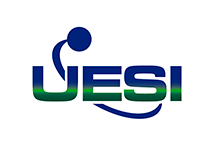Deploying artificial reef construction services in Texas waters presents a distinct set of challenges beyond ordinary marine construction. From shifting sands and strong currents to regulatory complexity and ecological sensitivity, projects must balance engineering, biology, and logistics. Achieving successful underwater habitat restoration, durable marine biodiversity support structures, and sustainable eco reef building solutions requires tight coordination. A contractor like Underwater Engineering Services Inc (UESI)—combining diving, engineering, and inspection expertise—is well suited to meet these hurdles.
1. Coastal Dynamics & Sediment Mobility
One of the foremost challenges in Texas is dealing with sediment transport and coastal dynamics. Shorelines often experience shifting sands, variable currents, and episodic storms that reshape bottom topography. A reef placed in one area can become buried or destabilized by sediment drift. To counter this, detailed pre-installation surveys and predictive sediment modeling are essential. Without such analysis, engineered reefs risk being smothered or undermined before achieving ecological function—losing their intended role in underwater habitat restoration.
2. Storm Resilience & High-energy Conditions
Texas coastal zones face frequent tropical storms, hurricanes, and strong wave events. Any marine biodiversity structures must be engineered to withstand episodic forces well beyond daily loads. Modules must resist uplift, scour, and displacement under extreme storm conditions. Neglecting these forces can lead to structural failure or reef migration, erasing both ecological and financial investments. Ensuring survivability under severe weather is a central challenge for effective artificial reef construction services.
3. Corrosion Resistance & Material Durability
In Texas’s saltwater environment, material durability is a constant concern. High salinity, turbulence, and biological activity exert relentless stress on structures. Conventional concrete and steel may corrode or foul quickly without proper treatment. Choosing corrosion-resistant materials—such as marine-grade concrete, protective coatings, or composite modules—is vital for long-term performance. Otherwise, reef modules degrade prematurely, compromising both investment and ecological goals.
4. Species Compatibility & Ecological Uncertainty
A reef’s ecological success depends on the species selection it aims to support. Texas coastal waters contain varied ecosystems—from oyster reefs to fish habitats dependent on hard substrates. Designing for one community may not suit another. Ecological mismatch—wrong depth, texture, or layout—can discourage recruitment and growth. Addressing this uncertainty is crucial to achieving functional underwater habitat restoration rather than installing inert underwater structures.
5. Regulatory Navigation & Permitting Complexity
Artificial reef construction in Texas involves navigating an intricate regulatory framework. Permitting may include coordination with the U.S. Army Corps of Engineers, Texas Parks and Wildlife, coastal management agencies, and environmental regulators. Each step can extend timelines or introduce new compliance conditions. A contractor with Gulf Coast permitting experience is indispensable, ensuring that reef projects align with all environmental and safety requirements while minimizing administrative delays.
6. Deployment Logistics in Shallow Waters
Texas reefs are often deployed in shallow nearshore zones where logistics become difficult. Shallow-water operations restrict vessel access, while tides, sediment transport, and navigation channels constrain working windows. Precision in module placement becomes harder in these turbulent environments. Successful execution demands efficient staging, crane operations, and dive support—all under stricter timing and spatial limits. Managing these variables effectively determines whether an eco reef building project stays on schedule and within budget.
7. Monitoring Systems & Maintenance Challenges
Long-term success relies on continuous inspection and monitoring after installation. Texas waters often have high turbidity and sediment loads that limit diver visibility and sensor accuracy. Biofouling and corrosion can damage instrumentation, requiring frequent cleaning or recalibration. Neglecting maintenance can lead to shifting modules or ecological decline. Sustaining reef performance over decades is as demanding as the initial construction, emphasizing the need for robust inspection protocols and maintenance planning.
8. Integrated Contracting & Risk Management
Texas reef projects require a fully integrated contractor capable of handling multidisciplinary coordination—from diving and engineering to inspection and permitting. Disjointed handoffs between teams can increase errors and risks. Firms like UESI, offering unified underwater engineering, construction, and inspection, minimize such risks. Their established safety systems, documentation controls, and quality assurance processes help mitigate operational hazards common to marine reef programs.
9. Lifecycle Investment & Budget Constraints
While cost control is important, the key issue lies in lifecycle value rather than initial expense. Reducing budgets for materials, engineering, or post-installation monitoring often leads to premature failure or underperformance. Texas’s harsh environmental conditions amplify these risks. Stakeholders must be encouraged to view artificial reef construction as a long-term ecological and economic investment, requiring funding not just for installation but for ongoing maintenance, evaluation, and adaptive remediation.
Overcoming Challenges Related to Artificial Reef Construction Services in Texas
If you plan to implement artificial reef construction services in Texas, you must anticipate challenges across coastal dynamics, engineering design, ecological planning, and permitting. Success depends on a multidisciplinary approach to underwater habitat restoration, long-lasting marine biodiversity structures, and environmentally responsible eco reef building solutions. Partnering with Underwater Engineering Services Inc (UESI) ensures integrated management of diving, construction, inspection, and compliance. Visit our website or contact their Gulf Coast operations to schedule a consultation. With the right expertise, your reef can thrive as a durable ecological asset for decades to come.




